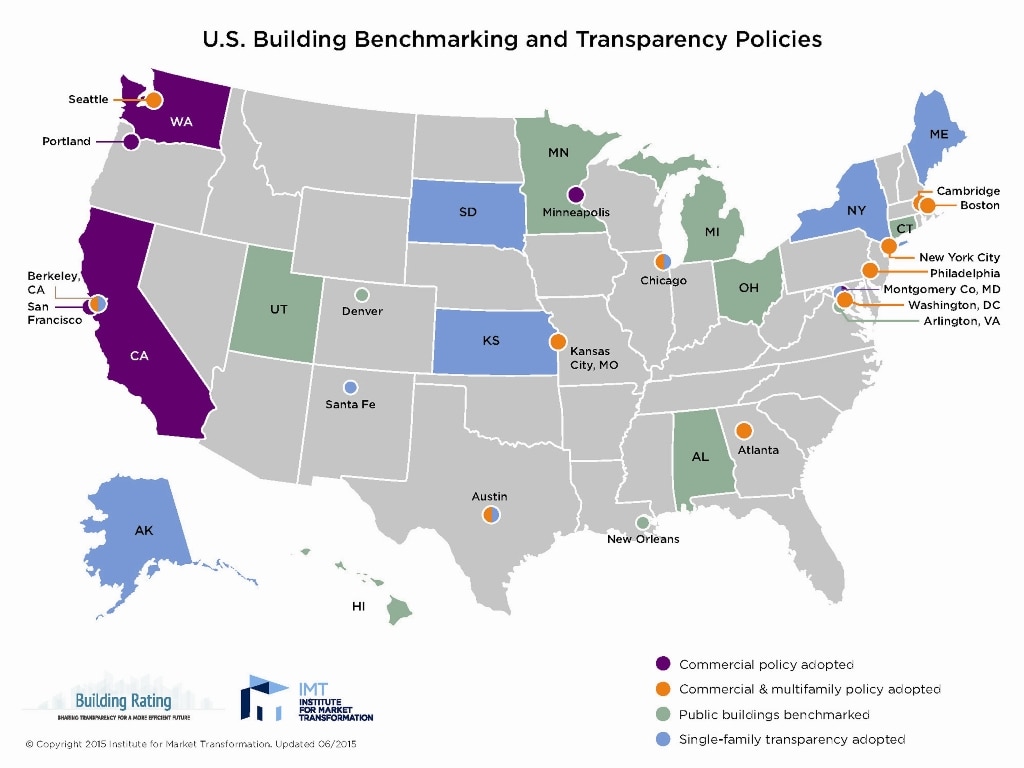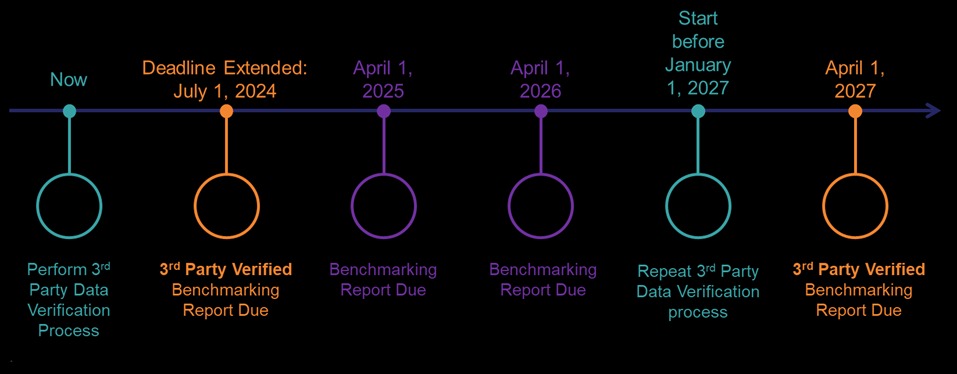According to the Institute for Market Transformation, fourteen cities, two states, and one county in the U.S. now have energy benchmarking and transparency policies in place for large buildings. This means that continually more cities and jurisdictions will have an understanding of how their buildings perform. It also means that these policies and their outcomes can be compared against each other and ultimately improved.

14 cities, 2 states, and 1 county in the U.S. now have benchmarking and transparency policies in place for large buildings.
With these improvements in the policy landscape impacting the built environment, the question was asked: How can the data be analyzed, and what impacts do the policies themselves have on building energy usage, greenhouse gas emissions, and the local economies?
At the end of May the Department of Energy (DOE) published the DOE Benchmarking & Transparency Policy and Program Impact Evaluation Handbook, which provides “cost-effective, standardized analytic methods for determining gross and net energy reduction, greenhouse gas (GHG) emissions mitigation, job creation and economic growth impacts” for jurisdictions that operate benchmarking policies.
Also released in May was the New York City Benchmarking and Transparency Policy Impact Evaluation Report which utilized real NYC data using the same methodologies.
SWA worked with the Navigant Consulting and DOE teams to review data from two jurisdictions and develop methodologies for analysis.
The general findings of the research team were: (more…)


